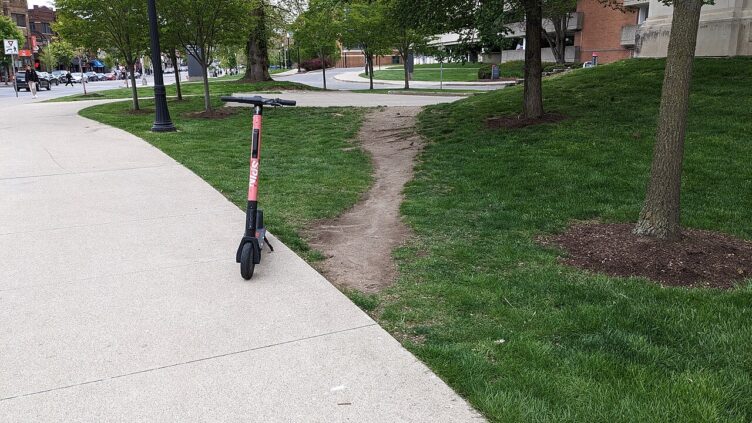I saw a short form video recently about “desire paths” (also known as desire lines or mechanical erosion). It got me thinking about paths in general, how we each take a different route to get to our desired outcomes, and how our experiences and abilities will either take us down a planned/paved path, down a desire path, or will find us forging our way in a direction no one has trod before, creating our own path in the process.

[A desire path] is an unplanned small trail formed by erosion caused by human or animal traffic. The path usually represents the shortest or the most easily navigated route between an origin and destination, and the width and severity of its surface erosion are often indicators of the traffic level it receives.
Adopting Desire Paths
When I was in college there were plenty of paved walkways for students to use to get from building to building criss-crossing the whole campus. There were also well-worn desire paths across large expanses of lawn where students took shortcuts to arrive at their destinations more quickly.
The thing about mechanical erosion is that given enough time, the erosion makes the ground beneath the path become infertile soil. The groundskeepers could spread as much grass seed as they wanted, and it would blow away with the wind, be trodden down into the dirt, and lie wasted and ruined. They can dig up the ground and replace it with good sod, but it’s likely to begin the mechanical erosion process all over again. Good organizations realize that those paths have become part of the student experience, then pave them and make them further accessible to all students. (Often erosion paths are not accessible to those with disabilities.)
Just as streams and rivers will choose the path of least resistance as they flow across land, people will choose to either follow the path they choose, or (en masse) create one.
I think it’s like that in tech, too, for all of us, but especially for women and underrepresented groups. We have often had to forge a path different from the main path that most others have followed, for different reasons. Although once that path has become mechanically eroded it may appear to be a shortcut, it didn’t start out that way. Indeed, it was likely cut through tall grass, bush, undergrowth, trees, and … well, you get the idea.
I’m also reminded of Robert Frost when I think of paths. (How could I not be?)
The Other Road
The Road Not Taken (by poet Robert Frost)
Two roads diverged in a yellow wood,
And sorry I could not travel both
And be one traveler, long I stood
And looked down one as far as I could
To where it bent in the undergrowth;Then took the other, as just as fair,
And having perhaps the better claim,
Because it was grassy and wanted wear;
Though as for that the passing there
Had worn them really about the same,And both that morning equally lay
In leaves no step had trodden black.
Oh, I kept the first for another day!
Yet knowing how way leads on to way,
I doubted if I should ever come back.I shall be telling this with a sigh
Somewhere ages and ages hence:
Two roads diverged in a wood, and I—
I took the one less traveled by,
And that has made all the difference.
Sometimes It IS the Destination
I’ve heard my whole life that “it’s about the journey, not the destination.” And while that’s true for a lot of things (if not somewhat trite), it’s not true of everything.
I’ve been quietly fundraising to get to WCEU in June. I promise you, this has most definitely been about the destination. I also hate long flights. So although I can’t wait to get to Switzerland, it’s not about the journey.
Sometimes being in a role you desire is the destination. The arduous work that it may have taken to get there was more difficult that it needed to be due to varying obstacles. While those may make you stronger, it’s still about the destination for many.
Sometimes it’s about the journey, sure. Maybe most times, even. But it’s also about the destination. And desire paths, mechanically eroded paths, off the beaten paths, and carving your own path are the only way to get there.
How Did You Get Here? What’s Your Path Forward?
When it comes to desire paths, you can thank the many people who trod them before for the ease of both discovery and access. Maybe you are the one to thank because you discovered it first.
What is your path forward? Will you stay on the safe and paved road? Or will you take the desire path – however unconventional it may feel – to arrive at your destination.
Wherever you’re going, I hope your path is easy and your destination is in sight.
Featured Image Attribution: dankeck – https://www.flickr.com/photos/140641142@N05/52849400711/, CC0, https://commons.wikimedia.org/w/index.php?curid=131970058
